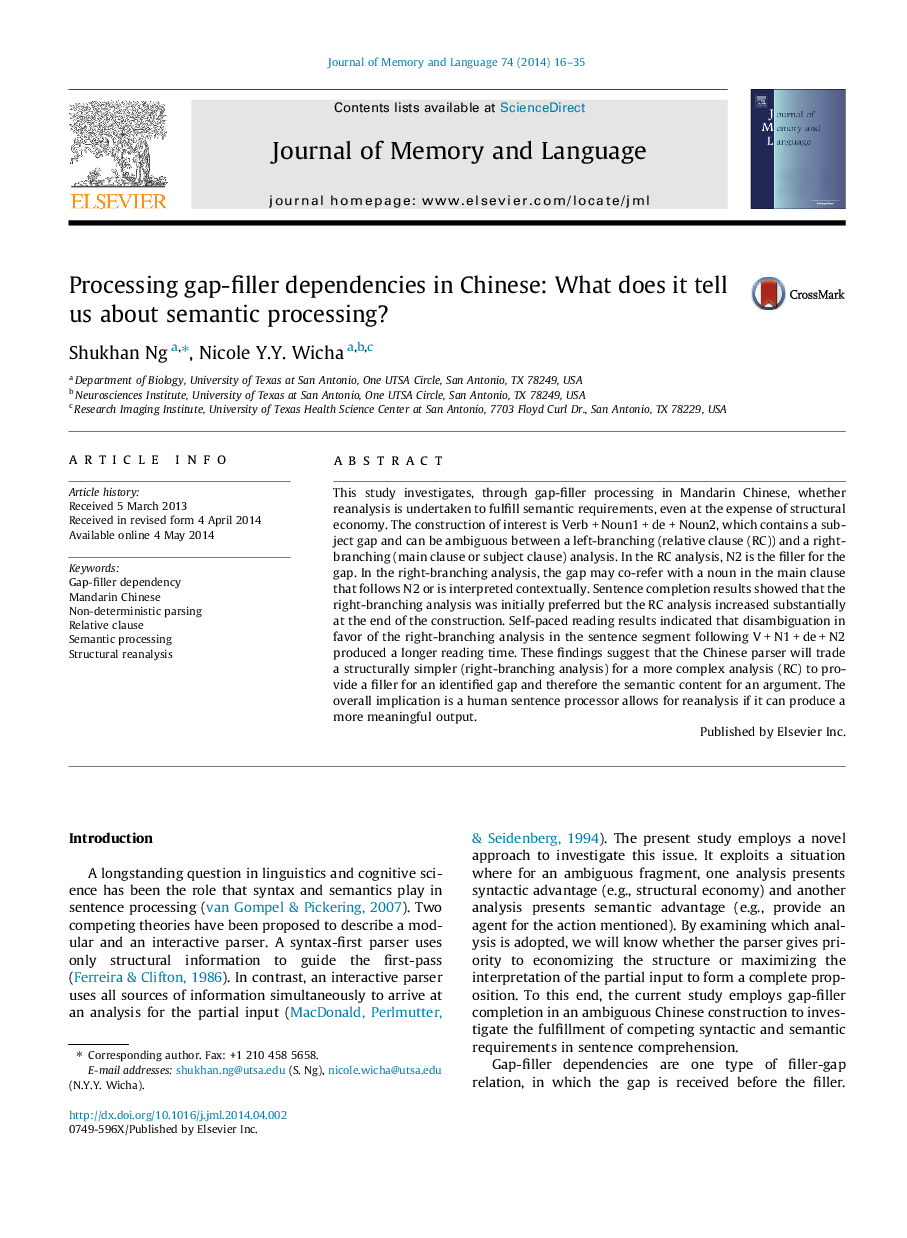| Article ID | Journal | Published Year | Pages | File Type |
|---|---|---|---|---|
| 931848 | Journal of Memory and Language | 2014 | 20 Pages |
•Chinese gap-filler completion is used to test syntactic and semantic processes.•Construction of interest is Verb + Noun1 + de + Noun2 that contains a subject gap.•Right-branching analysis was found to be initially preferred for the construction.•The more complex relative clause was adopted if Noun2 was a good filler.•Chinese parser will override structural economy to complete a proposition.
This study investigates, through gap-filler processing in Mandarin Chinese, whether reanalysis is undertaken to fulfill semantic requirements, even at the expense of structural economy. The construction of interest is Verb + Noun1 + de + Noun2, which contains a subject gap and can be ambiguous between a left-branching (relative clause (RC)) and a right-branching (main clause or subject clause) analysis. In the RC analysis, N2 is the filler for the gap. In the right-branching analysis, the gap may co-refer with a noun in the main clause that follows N2 or is interpreted contextually. Sentence completion results showed that the right-branching analysis was initially preferred but the RC analysis increased substantially at the end of the construction. Self-paced reading results indicated that disambiguation in favor of the right-branching analysis in the sentence segment following V + N1 + de + N2 produced a longer reading time. These findings suggest that the Chinese parser will trade a structurally simpler (right-branching analysis) for a more complex analysis (RC) to provide a filler for an identified gap and therefore the semantic content for an argument. The overall implication is a human sentence processor allows for reanalysis if it can produce a more meaningful output.
